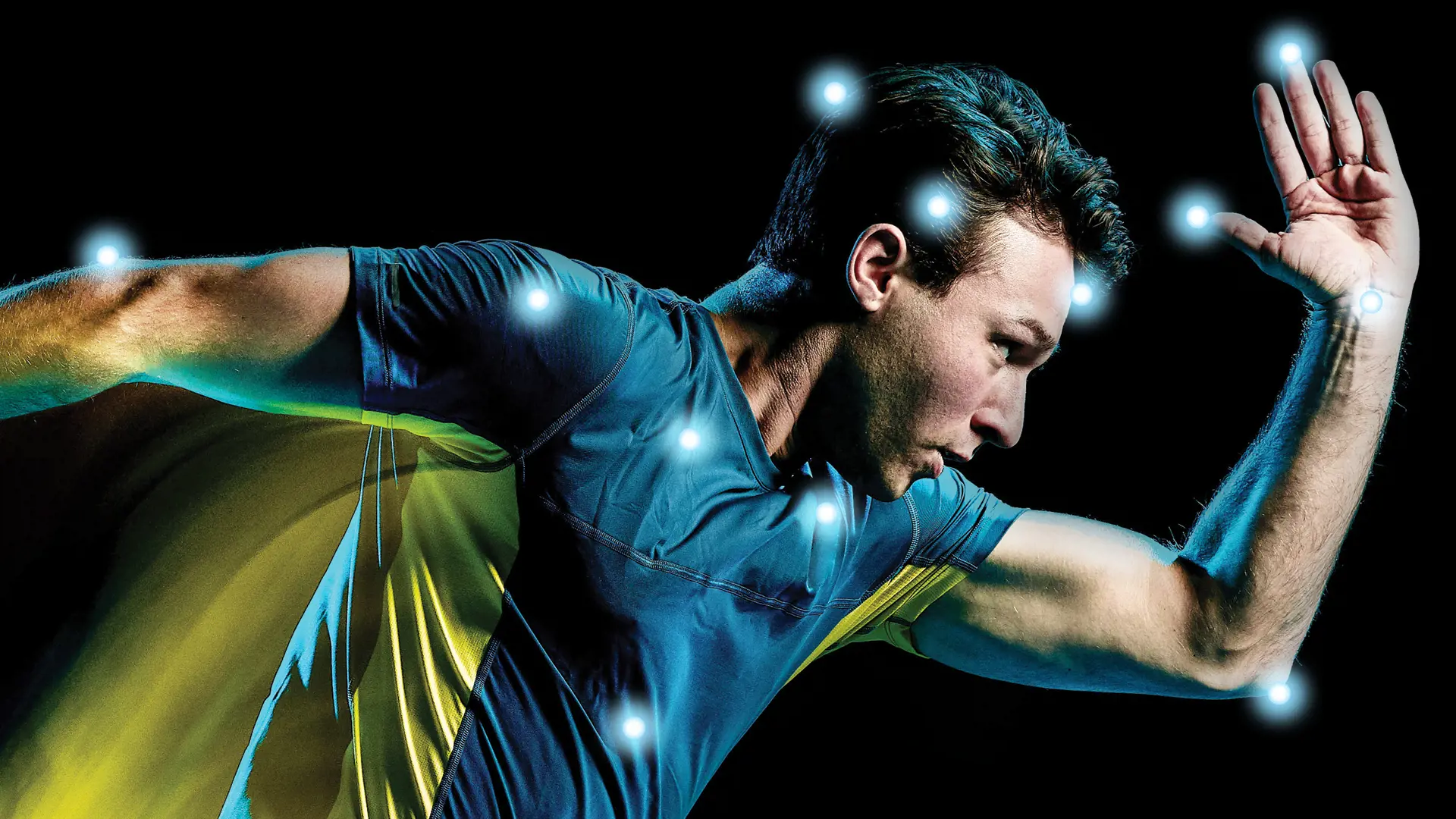
by C. L. Stambush
IMAGINE STEPPING INTO a classroom where the magic of Hollywood meets the precision of biomechanics. Exercise science and kinesiology students are experiencing this exciting blend using a 3D motion capture system—the same technology that brings your favorite CGI movie characters to life!
While motion capture is traditionally used in media like CGI movies, animation, robotics and virtual reality, USI is harnessing its power for biomechanics. By capturing the angular positions and velocities of joints, the system allows for a detailed quantitative analysis of movements.
The motion capturing system uses eight high-tech cameras to track movements with incredible accuracy using reflective markers. It can be synchronized with the department's force plates and wireless electromyographers (EMG) for a more in-depth analysis of body movements. "It is crucial for our students to have this technology as the field grows so we can adequately prepare them for their future careers. Biomechanics is a very important component for our majors," says Dr. Cody Strom, Assistant Professor of Kinesiology and Sport.
The Kinesiology and Sport Department uses this equipment in its Biomechanics and Motor Learning course, which includes a movement analysis component. Projects explore how different movement patterns can affect an individual's health and performance. "I have my students determine things like linear and angular velocities, angles, trajectory, power, etc., using basic video and tape as markers," says Strom. "This gives them an underlying knowledge of what is called 'digitizing.'"
Beyond the classroom, the 3D motion capture system is also used in recruiting students and faculty research. "Our department has 34 Illume been very exercise-physiology heavy when it comes to advanced equipment offerings," says Strom. "Adding this, and the EMGs, gives our current research faculty more capabilities and opportunities to branch out into other forms of research that were not previously possible or feasible with the time it takes to manually 'digitize.'"
This advanced technology is not only enhancing research capabilities but also broadening the scope of practical applications. "Biomechanics is crucial for all concentrations in exercise science and kinesiology," says Strom. "For occupational therapists and physical therapists, analyzing movements helps identify and address insufficiencies through program prescriptions.
Coaches can use this analysis to correct athletes' form more precisely. From mobility to sports performance, improving movement through video evidence guides our plans moving forward."
